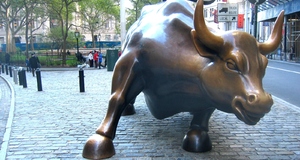Featured Article:Capital Controls in Emerging Market Economies: Comparing Their Use and Effectiveness in Five Countries
By
2015, Vol. 7 No. 03 | pg. 1/4 | »
IN THIS ARTICLE
AbstractThe use and effectiveness of capital controls in emerging market economies is important to examine because of the potentially damaging effects that these controls may have on a country’s economic growth and development, especially if the country in question is growing at a fast rate. This study relies on quantitative methods to examine whether five emerging market economies in Latin America and Asia—Brazil, Chile, Thailand, Malaysia, and India—have become more insulated from capital flow volatility and exchange rate appreciation, among other economic effects, as a result of their use of capital controls to stabilize their respective economies. The findings of this study suggest that on the whole, capital account liberalization is preferable to the use of capital controls and if these restrictions must be used, then they should be narrow in focus, short in duration, and focus on capital inflows in order to minimize their potential adverse consequences. This conclusion is significant because of the implications it has for policymaking and recommendations made by the IMF. In order for emerging market countries to experience significant economic growth and stability, it is important that they strategically liberalize their capital accounts and minimize their use of capital controls. The Importance of Studying Capital ControlsThe recent global economic crisis brought the use of capital controls by emerging market economies into the spotlight and changed previously held notions about the effectiveness of these types of capital market restrictions. As a result of globalization, capital flows have increased significantly across countries and in response, the use of capital controls by certain emerging economies has also become more prevalent. The reason that emerging economies often use capital controls is to regulate their capital accounts and reduce the volatility associated with the cyclical nature of short-term debt inflows and outflows. When countries implement capital controls, they normally use either price-based or quantity-based instruments.For example, a price-based control that will be examined later in the paper is Brazil’s six percent tax on foreign currency if it is being converted into short-term debt or equities. Meanwhile, an example of a quantity-based control could be South Korea’s “in-use limitation” that only allows firms that have foreign currency reserves to borrow abroad (Flowers, 2011). The reason it is important to study the use and effectiveness of capital account restrictions in the contemporary environment is because the IMF—the most influential authority in the international monetary and financial realm—recently made a significant policy shift with respect to the use of capital controls. Traditionally in the 1990s, the IMF strongly supported capital account liberalization as a necessary tool for a country to progress economically. After the recent global financial crisis, however, the IMF reconsidered its stance on the issue and in 2012, came to the decision that capital controls are acceptable to use by economies given certain conditions. Therefore, the issue of capital account liberalization versus capital account restriction is one that has taken center stage in various debates. While the consequences of the IMF’s change in policy stance are yet to be seen, it is clear that various emerging market economies will continue to use capital controls to mitigate volatility that arises. As a result, it would be useful to understand how effective capital controls are in certain emerging economies and what the implications of these findings are for the future. This paper highlights several emerging markets that historically or currently use capital account restrictions and it will attempt to assess whether the use of these controls are more beneficial than they are detrimental. Finally, the paper concludes with an analysis of the potential effects of the IMF’s altered policy stance and makes recommendations for future research on this subject. Two Perspectives on Capital Controls and Their Implications for Emerging Market EconomiesScholars have long argued over the use and effectiveness of capital controls by economies that use them to regulate capital market flows into and out of the country’s capital account. The two dominant perspectives in this debate—proponents of capital account liberalization and supporters of capital controls—each claim that their view is more applicable to emerging market economies. While the pro-liberalization camp argues that opening capital accounts will allow for more economic growth and prosperity, supporters of controls assert that these tools are necessary to curb volatility that arises from large inflows or outflows of capital. Thus, the existing literature on capital controls is centered on the dialogue between proponents of liberalization versus those that support certain protectionist measures. The traditional IMF view of capital controls has been that these restrictions are harmful to emerging market economies and they should be abandoned in favor of opening capital accounts to enable a free flow of goods and services. The IMF had three primary reasons for its recommendation that countries have open capital accounts. First, most emerging markets generally had lower savings than their more developed counterparts, so open capital accounts would allow for the flow of funds from wealthier nations to ones that needed to raise investment in order to stimulate development. Moreover, the IMF was wary of the fact that capital controls could lead to a “beggar-thy-neighbor” mentality among countries, since these controls could be used to keep exchange rates artificially low, which could then have a detrimental spillover effect onto those countries’ neighbors. Finally, the argument still persists that in the past, capital controls have been ineffective in fulfilling their objectives (Flowers, 2011). Pro-liberalization forces further bolster their argument against capital account restrictions by referring to many economic studies that have shown there is only weak evidence to support the effectiveness of capital controls for countries to decrease capital outflow volume and implement monetary policy more freely (Brockmeijer, Martson, and Ostry, 2012, p. 6). As a result, during the 1990s, the IMF and U.S. Treasury encouraged countries to implement capital market liberalization policies (Stiglitz, 2004). Further support for the traditional IMF view on the ineffectiveness of capital controls is discussed in a Federal Reserve Bank of San Francisco report that finds countries that restrict international capital flows have had a higher probability of experiencing an exchange rate crisis. These findings continued to hold true even after macroeconomic factors that lead to speculative attacks and country-specific political and institutional factors were taken into account. As a result, the report concluded that countries without capital account restrictions generally have more stable exchange rates and encounter fewer speculative attacks. The San Francisco Fed’s report not only finds that capital account liberalization does not make countries more vulnerable to exchange rate instability, but it also further supports previous studies that question how effective capital controls are in protecting emerging market economies from speculative attacks (Glick and Hutchinson, 2002). On a microeconomic level, studies have also shown that capital controls inhibit the cross-border flow of money, which causes considerable harm to domestic economies. The use of capital controls restricts foreign investment, which then increases financing costs for domestic firms since they have less capital available to them. Moreover, controls encourage firms to participate in market-distorting behaviors as they try to minimize or entirely avoid the costs due caused by the restrictions and the government must spend significant sums of money to enforce these controls. Another issue with capital controls on the microeconomic level is the fact that they allow inefficiency to persist since domestic markets are insulated from external competition (Forbes, 2005). On the other hand, emerging market economies that implement capital controls that they deem necessary have reaffirmed their beliefs in the usefulness of these capital account restrictions in light of the recent financial crisis. Countries such as Brazil and India have highlighted that loose monetary policy on the part of the U.S., EU, and Japan have all contributed to speculative inflows into emerging economies’ asset markets. These inflows from outside investors have driven many countries to instate capital controls in order to manage volatility (The Hindu Staff, 2013). These measures are similar to what was done following the Asian financial crisis of the mid- to late-1990s, as many emerging market countries went against the recommendations by the IMF and imposed controls on capital outflows (Beattie, 2012). One prominent emerging market country that supports the use of capital controls is Brazil: a country that has used various controls—most often in the form of taxes—in the past and continues to do so today in an effort to regulate large inflows of capital into the country. Brazilian authorities argue that the dangers of allowing large and volatile capital inflows to persist in a country are evident if one were to examine the negative experiences of Iceland, Spain, and Ireland, as well as those of central and eastern European countries (Beattie, 2012). Many emerging market economies use capital controls to counter the negative consequences of short-term capital inflow surges and sudden reversals of these capital movements, and they argue that the ‘one-size-fits-all’ approach to capital account liberalization has been unsupported by economic literature (The Hindu Staff, 2013). The capital flow reversals that occurred in Europe during the recent crisis shows that even advanced industrial economies may be vulnerable to the unforeseen consequences of capital account liberalizations (Brunnermeier et al., 2012). Proponents of capital controls argue that the major concerns about using these restrictions have been addressed and proven to be unjustified in studies that show no correlation between an emerging market having an open capital account and experiencing economic growth (Edwards, 2001; Arteta, Eichengreen, and Wyplosz, 2001). This lack of correlation is further supported by the fact that even though countries in Asia and Latin America opened their capital accounts, they still experienced financial crises in the 1990s. However, it is important to note that the causes of these financial crises could have been entirely unrelated to capital account liberalization, as in the case of Mexico in 1994. Meanwhile, the concern that capital controls could lead to a “beggar-thy-neighbor” mentality if a country keeps its exchange rate excessively undervalued is not fully supported by empirical evidence. Existing empirical proof does not depict a significant negative spillover effect from countries implementing capital controls; in fact, emerging markets often turn to controls to stem the spillover from industrialized economies, such as Brazil’s imposition of high tax rates to incoming capital flows to buffer against the U.S.’s quantitative easing program. Finally, there is some econometric evidence that supports the hypothesis that the use of capital control instruments has actually been effective in some countries (Flowers, 2011). Proponents of capital account restrictions also highlight the fact that emerging market economies that had capital controls in place were among the least hard-hit countries during the financial crisis. In fact, several recent studies found that controlling capital inflows in emerging market economies allowed those countries to have safer external liability structures and, as a result, better economic resilience. Therefore, it could be the case that some emerging economies may be able to use well-targeted and temporary restrictions on capital inflows to combat disruptions that result from surging and ebbing capital flows (Brockmeijer, Martson, and Ostry, 2012, p. 6). Finally, recent econometric work released by the IMF actually shows that capital controls can be used in a number of beneficial ways: to change the composition of flows away from short-term debt toward more long-term debt, lessen the volatility of exchange rates, and allow emerging market economies to maintain a more independent monetary policy (Flowers, 2011; Wroughton, 2012; Rastello, 2012). These are some of the major arguments that have been put forth for why the use of capital controls should be allowed in emerging market economies and no longer restricted by the IMF and global community.Continued on Next Page » Suggested Reading from Inquiries Journal
Inquiries Journal provides undergraduate and graduate students around the world a platform for the wide dissemination of academic work over a range of core disciplines. Representing the work of students from hundreds of institutions around the globe, Inquiries Journal's large database of academic articles is completely free. Learn more | Blog | Submit Latest in Economics |


















